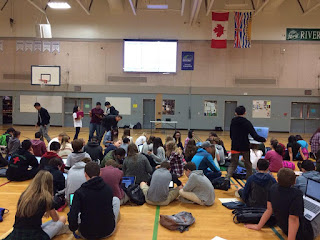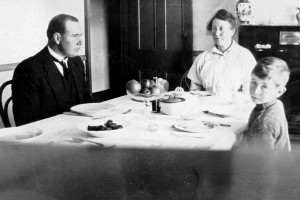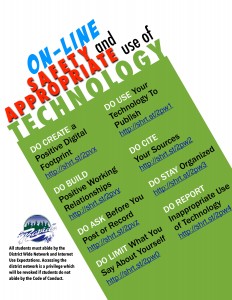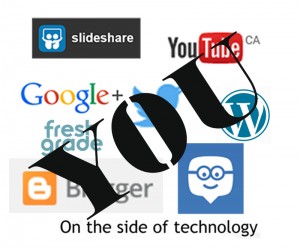I spent the last week talking digital footprint with hundreds of students at my school. As they develop their digital portfolios, we wanted make sure our students had a conversation about digital footprints, particularly their own. We asked students to Google themselves, to picture how their footprint is seen by others, and to reflect on some strategies to keep a good digital footprint.
I shared several videos on digital footprints with the students. This one showed the sheer vastness of information present online about us these days. From ultrasound pictures to RIP notices, our “digital dossier” grows at an alarming rate and sticks with us throughout our lives.
After sharing this video, I would relate true stories about online interactions that got people into hot water. A politician who had to step down, an employee who lost her job, all through online behaviour that that they had no clue would come to haunt them. Another video, by Michelle Clark, included an excellent Spoken Word on the digital footprint. I emphasized this line in it.
And I think my students got the message. Here is a shot of their Padlet response to my presentation.
And while some might look at that and think: Good work Robinson, you got the job done, you got your point across, something inside me said otherwise. In fact, I think I missed the whole point. What’s missing? What is missing is that yet again I had focused on the “Do Not’s”, the “Watch Out’s”, the “Caution’s”. Where was the inspiration? Where was the delight of sharing thoughts with people around the world? Where was leveraging the portfolio for global good? Nowhere. True, the students seemed to get the message of be careful online. But could I have sent them that message couched in an idea that their portfolio could have amazing potential? As I returned to the classes to follow up, I felt I had to start things off differently. I first showed this video below by Bethanie Gourley a grade 11 student from Arkansas.
I love the message here. It wasn’t just that Bethanie got to hear from Casey Neistat, her favourite filmmaker. It was that she used her portfolio for what she was passionate about. It showed the power of the digital portfolio. And her experience was such that she just had to share about it, and make this video. Showing this video to my students was a great jumping off point to have them consider their passions and how their digital portfolio could be meaningful to them. I showed them my idea of “Random Acts of Commenting” where they could make an encouraging comment on a post that pops up on their reader. I let them develop their portfolio, change the theme, make it their own. I let them to embed a video meaningful them, work on their About Me page, and customize.








.png)